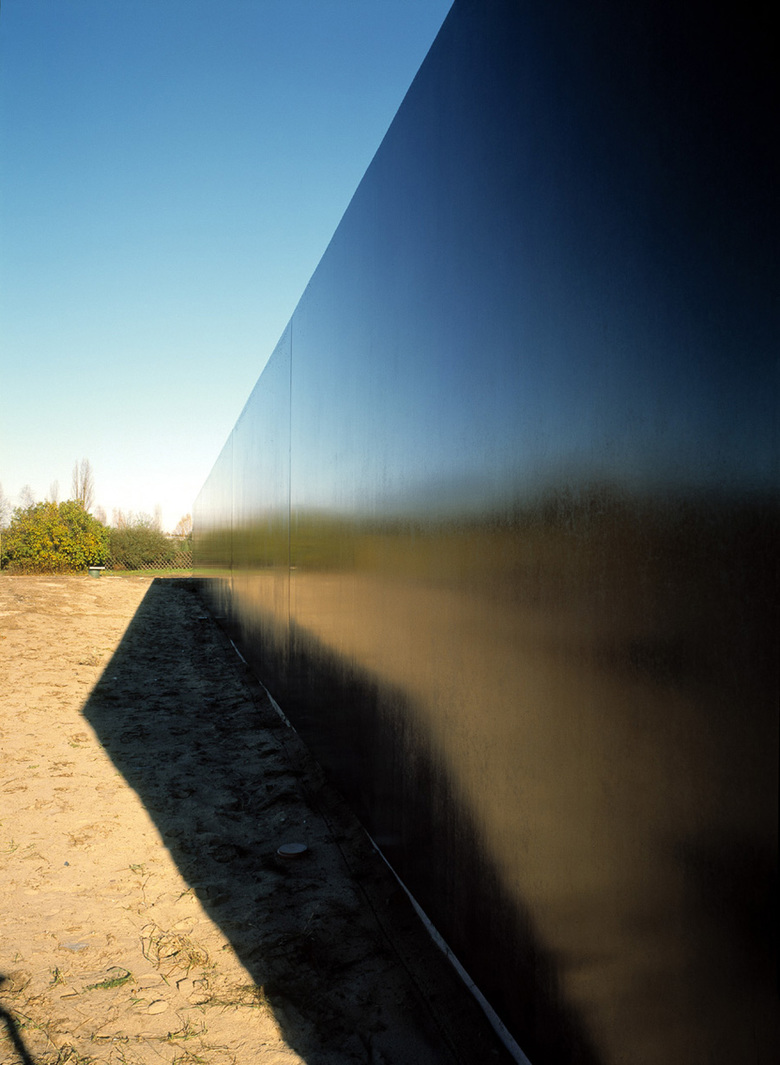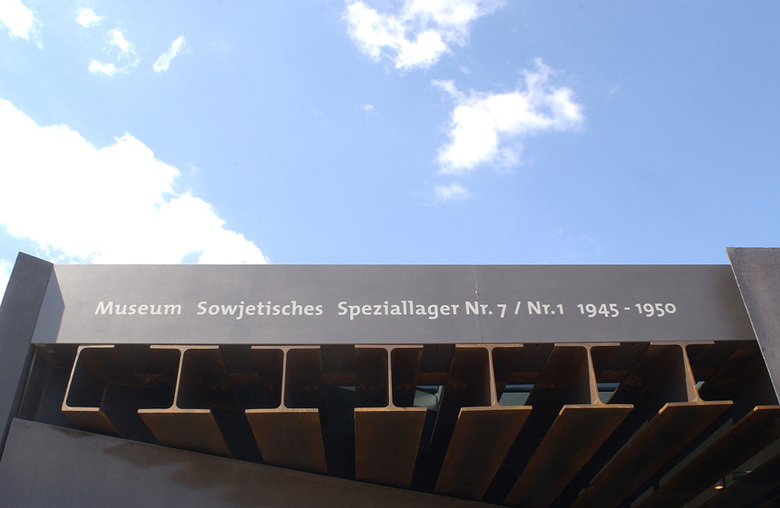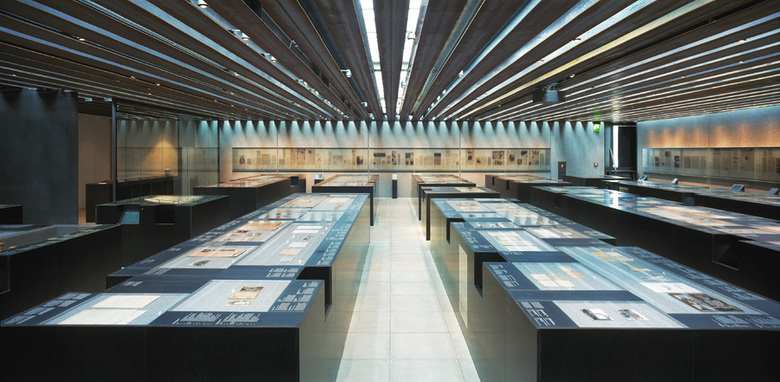Soviet Special Camp Museum in Sachsenhausen
Oranienburg, Germany
Concept The key task entailed defining the fine line between developing a building solely to document the camp’s post-1945 function, while at the same time maintaining a sense of its asymmetrical balance as regards the concentration camp’s history. What people of different ideologies are capable of and what people have to suffer in concentration camps or special camps cannot be addressed by means of documentation alone. The building had to provide information and encourage contemplation without being overwhelming.
The building attempts to avoid conventional architectural elements and vocabulary. It is reserved without disappearing entirely. Depending on the time of day and angle of view, the reflecting surfaces mirror the remnants of the past and the gloomy landscape with varying degrees of intensity. The building is stringently structured and, apart from the entrance, has only two other apertures piercing its homogeneous outer wall. The window glazing is fitted flush to the shiny concrete outer edges and is intended to allow views of the stone barracks and the cemetery through narrow slits. The solid concrete contrasts with the immaterial reflections of the surrounding area on the outer skin. The outdoor area remains more or less unchanged. Any necessary pathways are to be covered with crushed stone in the same colour of the existing pathways. The floor is on a level 0.98 m beneath the ground level of the site, and thus accommodates the proportions of the camp wall and the stone barracks.
Entrance Viewed from station “Z” through the opening in the wall, the building looks like a reflective block lying on the ground. You do not notice the entrance until you have passed through the wall opening. The outer level blends with the narrow entrance slit. The external wall folds into the building and leads you past the wind-break into the building. Visitors can reach the lower level, 0.98 m deeper, either by ramp or stairs.
The learning center, demonstration and seminar rooms (they can be combined) and all additional rooms are located behind the entrance wall and opposite the exhibition, separated by a translucent wall which can be used for exhibits. The exhibition takes place in a system of glass cases, separated from the outer wall. The surface of the glass cases is at the same level as the entrance, leaving the view into the exhibition room free.
Construction The walls are composed of seamless concrete molds with core insulation. Outer walls are smoothly molded, fitted with aggregates and then water-proofed in order to attain the desired degree of reflection. The surface of the inner shell has a raw appearance resulting from the acid treatment. Steel girders for the roof construction are spaced apart and positioned as high as possible. All the inner walls are made of either light-weight construction or glass. The doors and walls in the entrance are constructed of steel and glass.
Untreated, double concrete slabs are used for the floor to facilitate the use of media. Fresh air is also supplied to the building via the floor.
Lighting Girders are placed close together and produce meditative light effects in the morning and evening hours. Slightly curved, high-grade, uv-protective glass lies on the steel girders and is used to produce neutral, diffused roof lighting. At the same time, heat build-up from the sun’s rays is minimized. The glass surface directs water into internal gutters which are connected to a downpipe system between the two concrete shells.













